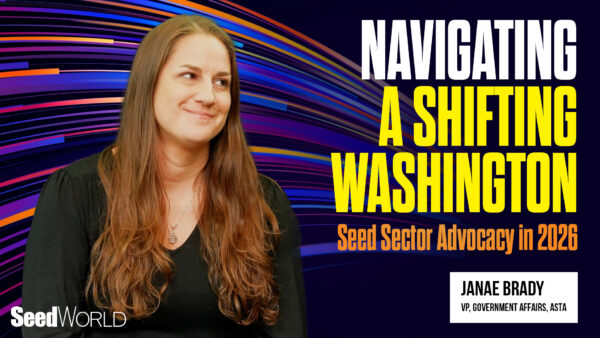The future is now when it comes to seed banks.
Weather continues to show us that it is incredibly unpredictable. That fact paired with various humanitarian crises can leave the future of seeds vulnerable.
On Seed Speaks, Peter Giovannini, Project Coordinator at Crop Trust, Anna Palmé, Senior Scientist at NordGen and Christina Walters, Lead Scientist at USDA-ARS National Laboratory for Genetic Resources Preservation joined us to discuss seed banks, also known as gene banks. These experts shared their expertise regarding seed banks and their applications in scenarios adversely affected by unpredictable weather conditions.
“I like to think that seed banks are like libraries,” shares Walters. “A bag of seeds is like a book that contains genetic information that helps with agriculture. It may help with resistance to cold, drought, disease. We maintain this library so that it’s used.”
While this episode of Seed Speaks initially focused on discussing the potential contributions of seed banks in the future, our experts were quick to share that the future is now.
Walters adds, “Seed banks are doing their job right now, not just for the future, but the present. If you look at yields for crops, in world seed bank statistics, you will see increasing yield since the 1960s, when the Green Revolution started. And for all of our gene banks, there’s a constant withdrawal of material for many uses.”
These banks are actively utilized rather than merely idle and waiting. The situations they are used in does vary.
“I can think of the two types of emergencies. General emergency where we have environmental or natural catastrophes, and human caused emergencies,” says Giovannini. “In both cases, seed banks are useful.”
Giovannini shared an example of when a seed bank was lost. The agriculture sector was fortunate to have a contingency plan for those situations.
“During the war in Syria, for example, a major gene bank was lost. The seed bank was fundamental for agriculture and plant breeding,” says Giovannini. “Fortunately, there is a seed bank in Svalbard, that is a safety duplicate for the gene bank that was lost. If not, all the material that was destroyed could maybe not have been restored.”
While all the experts noted the importance of seed banks now, there is no doubt that they will play important roles in the future of agriculture.
“It’s all about global seed and conserving genetic diversity which is needed especially in the context of climate change,” adds Palmé. “There’s a lot of variation needed to adapt our crops to the new conditions under climate change. Traits such as drought tolerance, for example, are increasingly thought to be needed in the future.”
Drought tolerance was not the only trait that Palmé mentioned is important to the future. She adds that besides drought tolerance, disease resistance is also important.
“It is an important role for seed banks to provide diversity. This is already happening, and has been happening for some time, but probably will be increasingly important in the future,” says Palmé.
Seed banks’ offering of genetic diversity and access to wild relatives is an important part of preserving and continuing to have success in agriculture.









